Seconded By: Britta Jaschinski,
Migration, a historical phenomenon embedded in human nature, has in recent decades become one of the main centres of political and social debate in the world. A debate that focuses on the interests and needs of the receiving societies, while it criminalizes the figure of the migrant, who, loaded with stereotypes and misinformation, is turned into a mass, stripped of all individuality, and therefore, of any possibility of comprehension.
Facing this reality, in the summer of 2016, César began working on the Passengers project. That year all historical records were broken on what is known as the Central Mediterranean Migration Route, with 181,436 migrants reaching Europe alive, while 4,576 lost their lives at sea. In an attempt to put name and face to this reality, to humanize the tragedy that was taking place in the Mediterranean Sea, on 1st August 2016 he portrayed the 118 passengers of a rubber boat, minutes after their rescue. This resulted in an initial series of portraits, always accompanied by the name, country of origin and age of its protagonists, which reflect with enormous forcefulness the dramatic process in which this group of people, pushed to the limit of human survival, found themselves. Their faces, their looks or the marks on their body reflected the mood and physical state in which they were after a long journey that had already marked their lives forever.
But that would be just the beginning of this project that has continued to evolve since then. He soon realized that in those first portraits they lacked real identity. Those were not themselves, but the result of a long journey during which their identity had been diluted in the mass, sometimes hidden by themselves for fear of the environment, or stolen based on abuses and humiliations. Since 2016, César has worked to locate the 118 of them, today scattered throughout Europe, to understand and document their real identity, with the aim of showing that in those individuals there were latent identities, which only needed a peaceful context to flourish again.
To this day, he has met over 70 of them, and has located 105. The reasons why they embarked on their journeys are multiple and often coexistent. They run the gamut from political and economic motives, to fleeing an epidemic or family conflict, to the simple human ambition to travel and experience the world. Some of them undertook their crossings for sentimental reasons. Others got caught up in the migratory flow. Some choices are thought-out, others are impromptu.
Their testimonies also reveal the reality they face in Europe. Where people end up is often the result of language proficiency, a network of acquaintances, word of mouth about job opportunities in a certain place, or chance. Italy, France, Germany, Spain, and the Netherlands are some of the stop-over countries.
In Passengers, the ultimate aim is to build empathy and understanding, but also to create a documentary corpus that can serve as a reference and help prevent the plight of migrants from being forgotten.
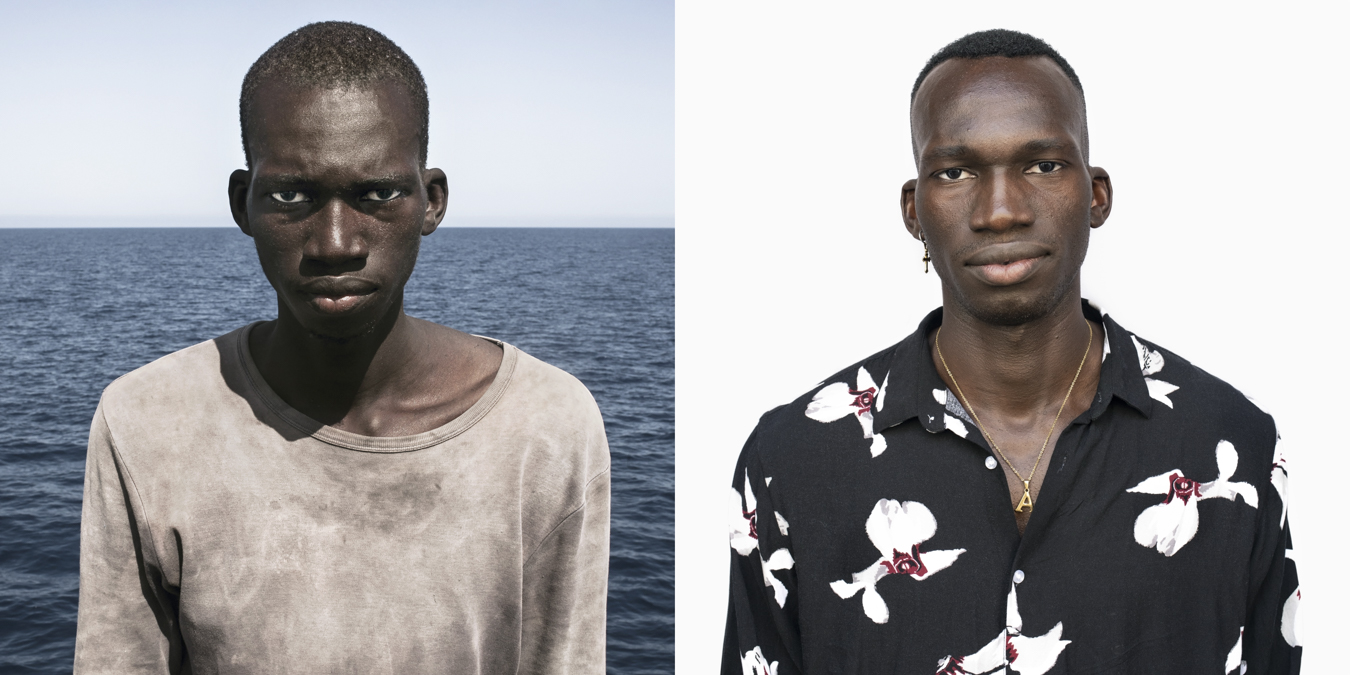
AMADOU, MALI – 1996
Amadou. Mali (1996). Left: 1st August 2016, Mediterranean sea – Libya. Right: 1st July 2021, Barcelona, Spain.
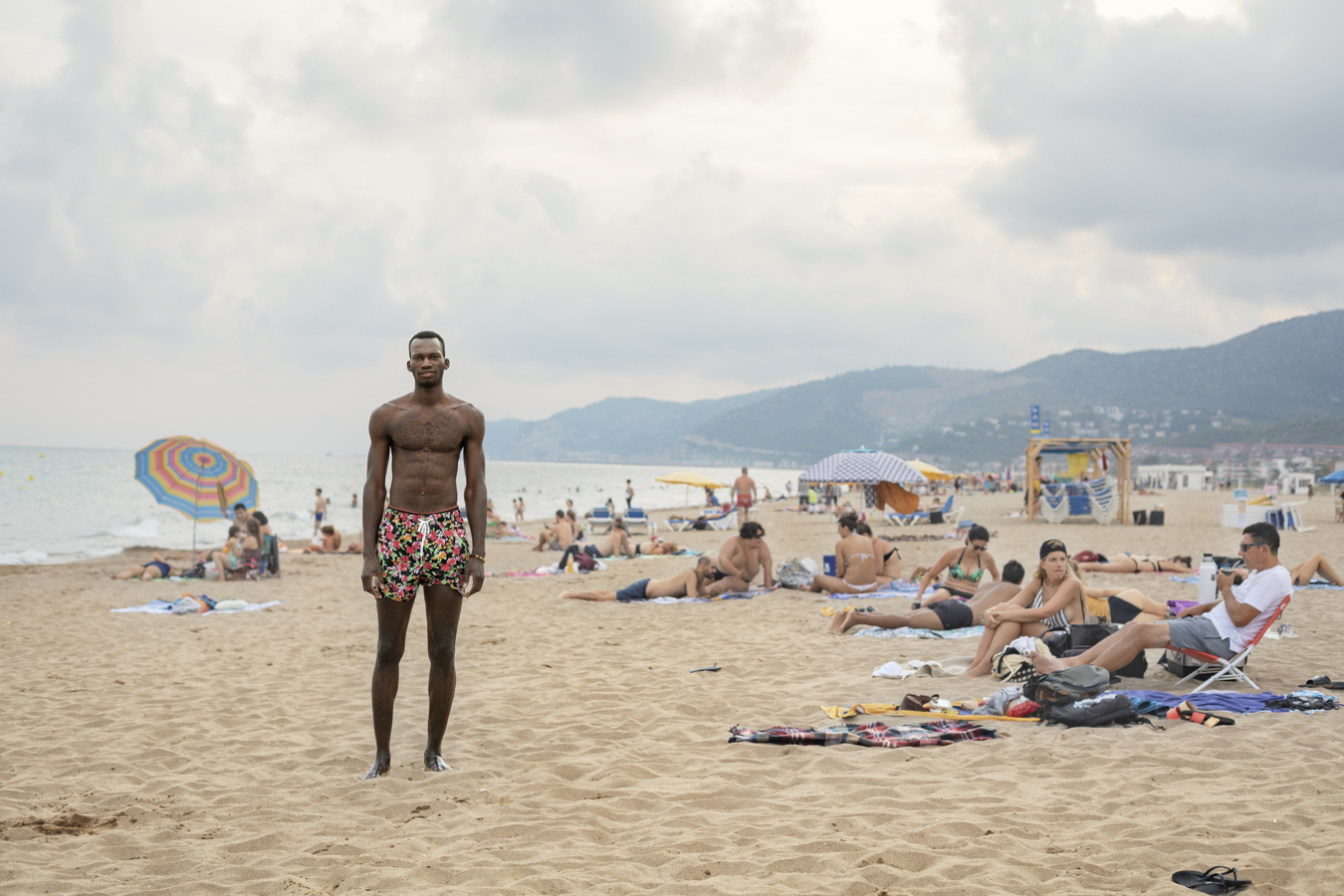
AMADOU, MALI – 1996. Barcelona, Spain
Amadou currently lives and works in Barcelona. In the image, he poses for a portrait on the beach at Castelldefels, a town just south of Barcelona, on a summer Sunday in 2019.
“Once at sea, I no longer feared death. I had suffered so much along the route, in Libya, that I reached a point where I didn’t even care about my own life,” says Amadou, while looking at images from the moment he was rescued from the sea in 2016. But now, he does so from a place of safety. Nearly nine years have passed since he arrived in Europe, and finally, his life is beginning to take shape in the city of Barcelona.
In 2022, Amadou was granted political asylum, given the difficult situation in Mali that forced him to flee the country in 2015. His life in Spain is slowly stabilizing: he currently works at a hotel in Barcelona and occasionally takes on modelling jobs. His greatest dream now is to reunite with his mother, whom he hasn’t seen in over a decade.
Barcelona, Spain. September 1, 2019.
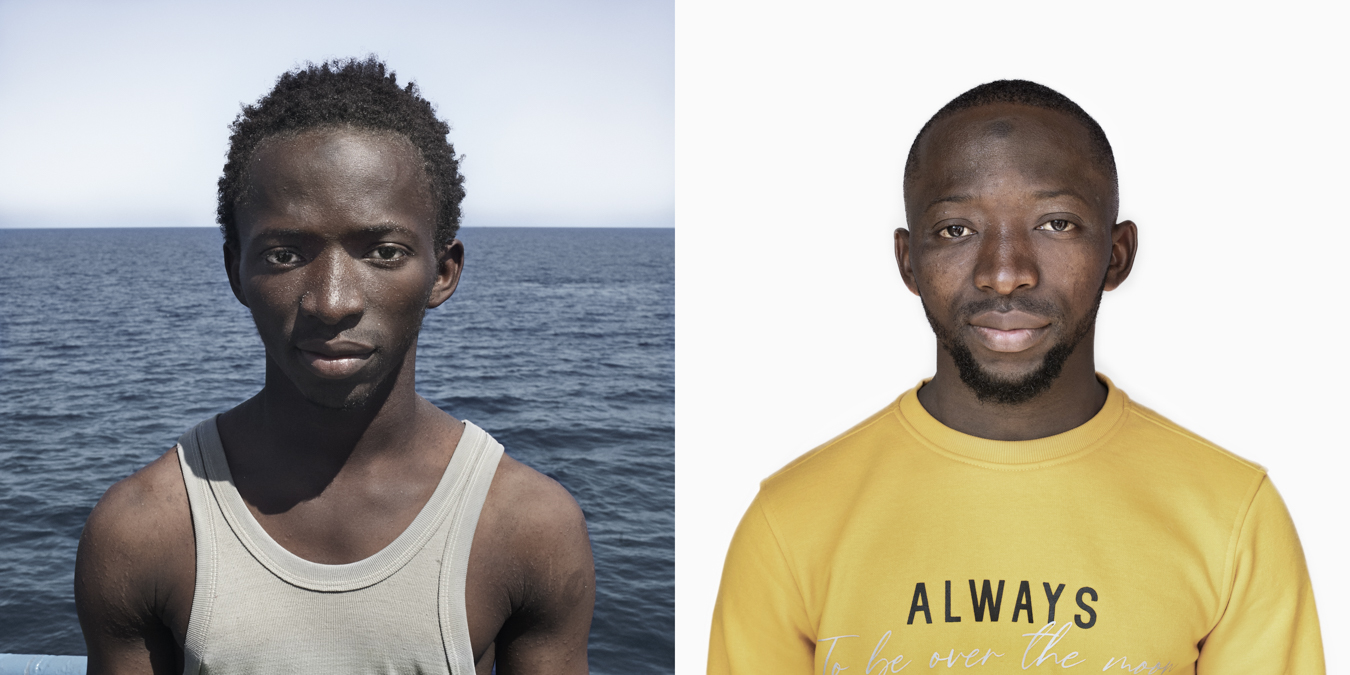
A. OUMAR, GUINEA – 1993
A. Oumar. Guinea (1993). Left: 1st August 2016, Mediterranean sea – Libya. Right: 6th February 2021, Palagiano, Italy.
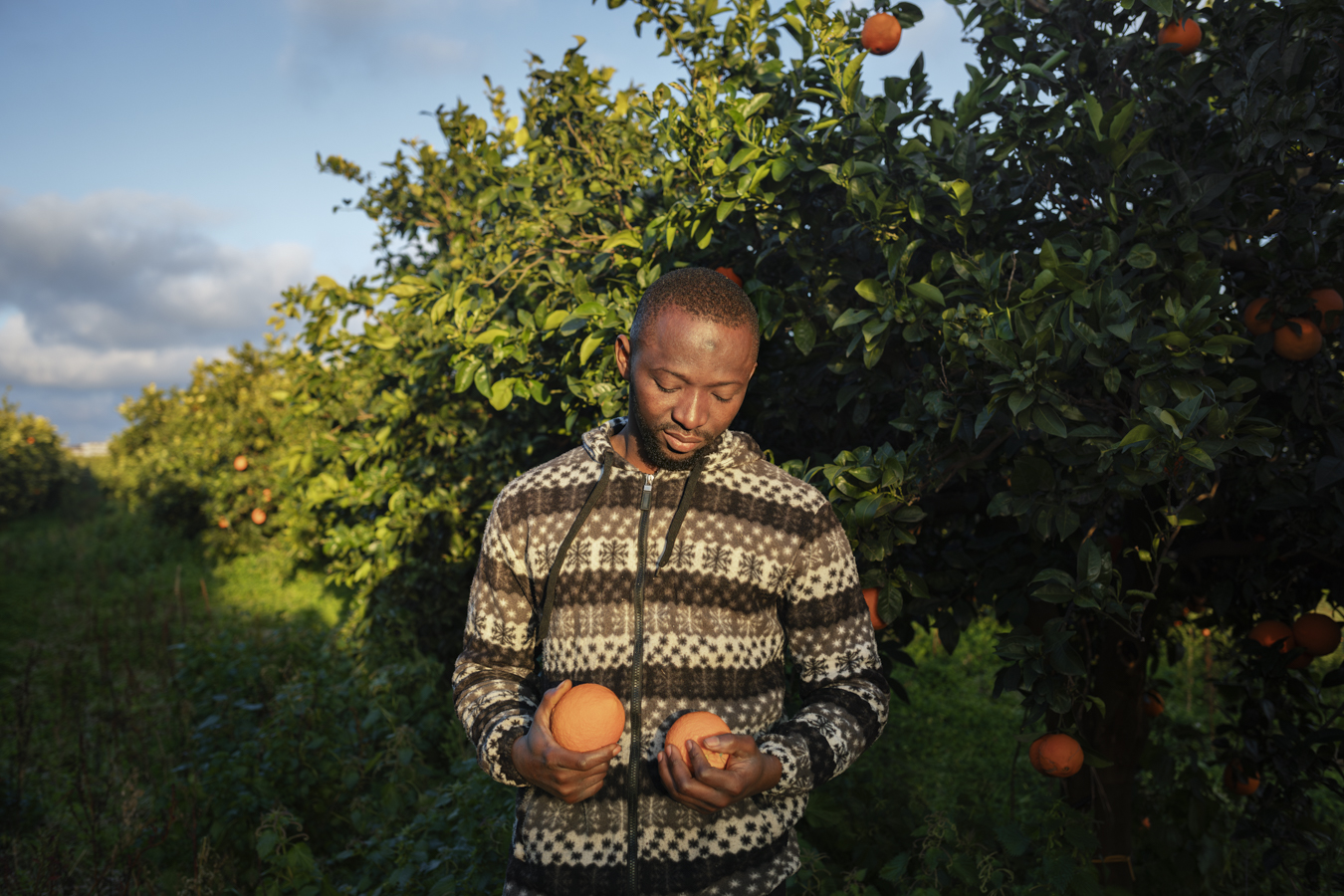
A. OUMAR, GUINEA – 1993. Palagiano, Italy
Alpha Oumar studied at university until the age of 20. He loved writing, and his father, a school principal, encouraged him to pursue journalism.
“But I saw that, even with a degree, my older brother was still earning very little,” he explains. “That’s why I wanted to go to Europe.”
Once in Italy, his initial asylum application was rejected. However, with the help of a lawyer—and thanks to his quick mastery of Italian—he obtained a residence and work permit. He was relocated to Palagiano, the “clementine capital” of southern Italy, where he now works for a citrus company.
Palagiano, Italy. February 11, 2022.
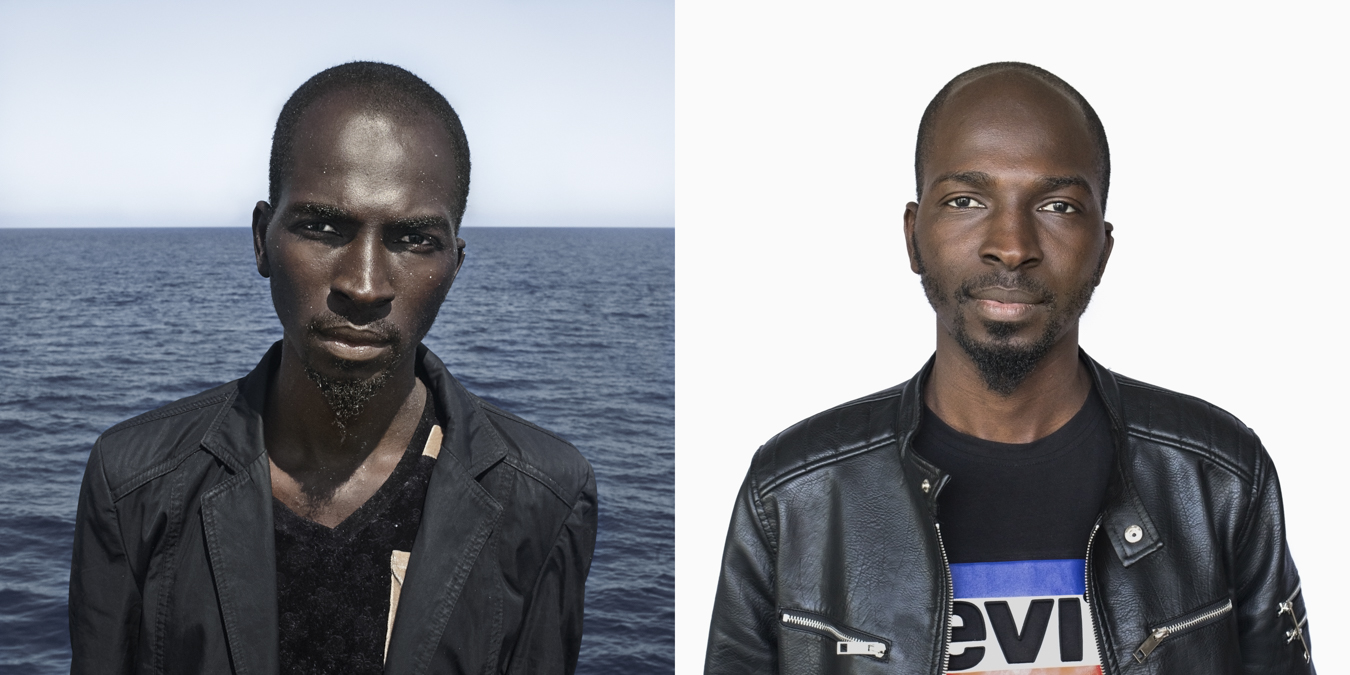
MOHAMAD, MALI – 1989
Mohamad. Mali (1989). Left: 1st August 2016, Mediterranean sea – Libya. Right: 21st September 2019, Paris, France.
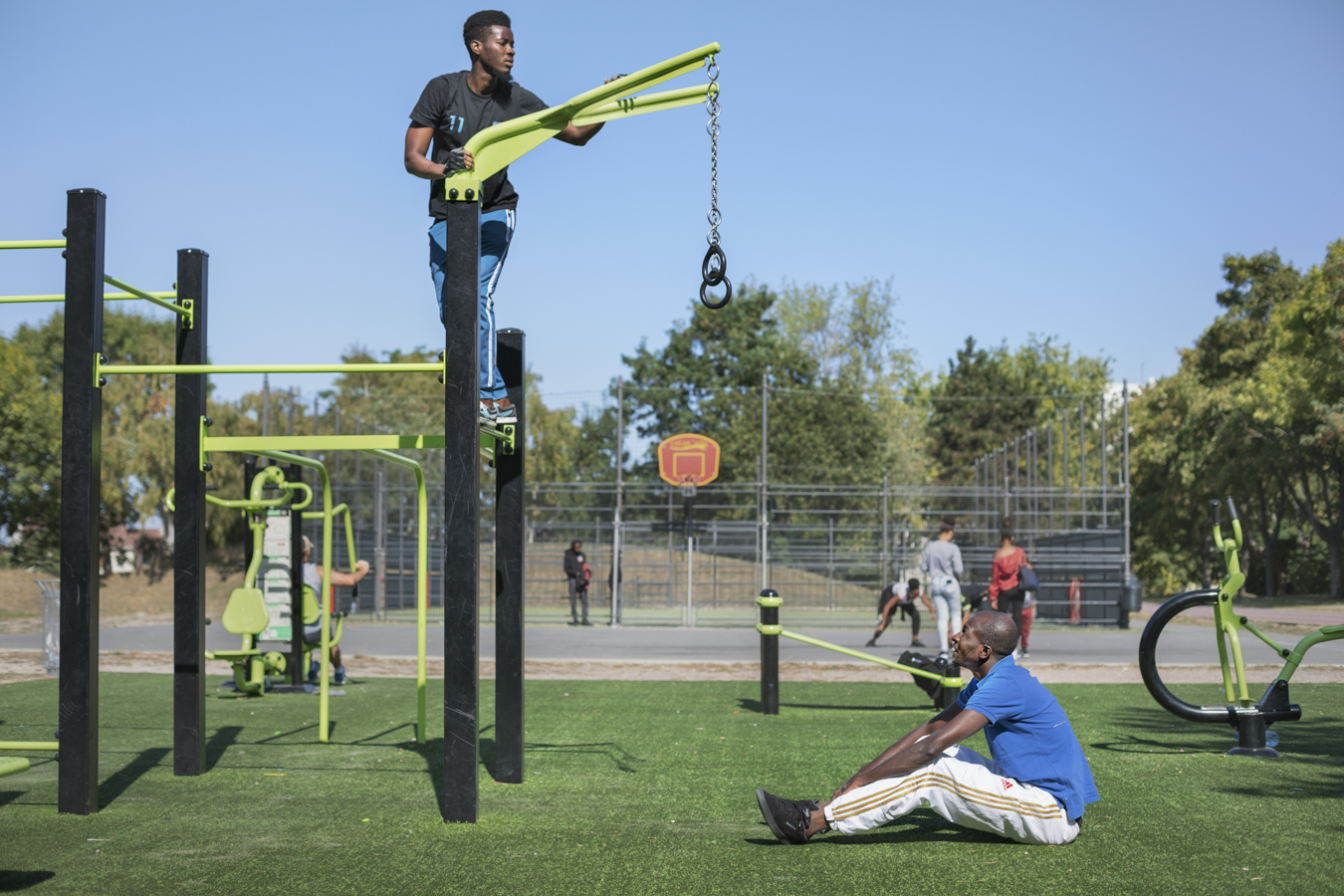
MOHAMAD, MALI – 1989. Paris, France
Mohamad (Mali, 1989) currently lives on the outskirts of Paris, where he works at the reception desk of a hospital. His first steps in Europe were easier than for others, as his father has been living in France for more than thirty years and was a great help. However, that did not prevent him from risking his life on the migration route.
After several failed attempts to obtain visas to reach France safely, he decided to cross the desert between Mali and Libya and reach Europe via the Mediterranean.
Paris, France. September 21, 2019.
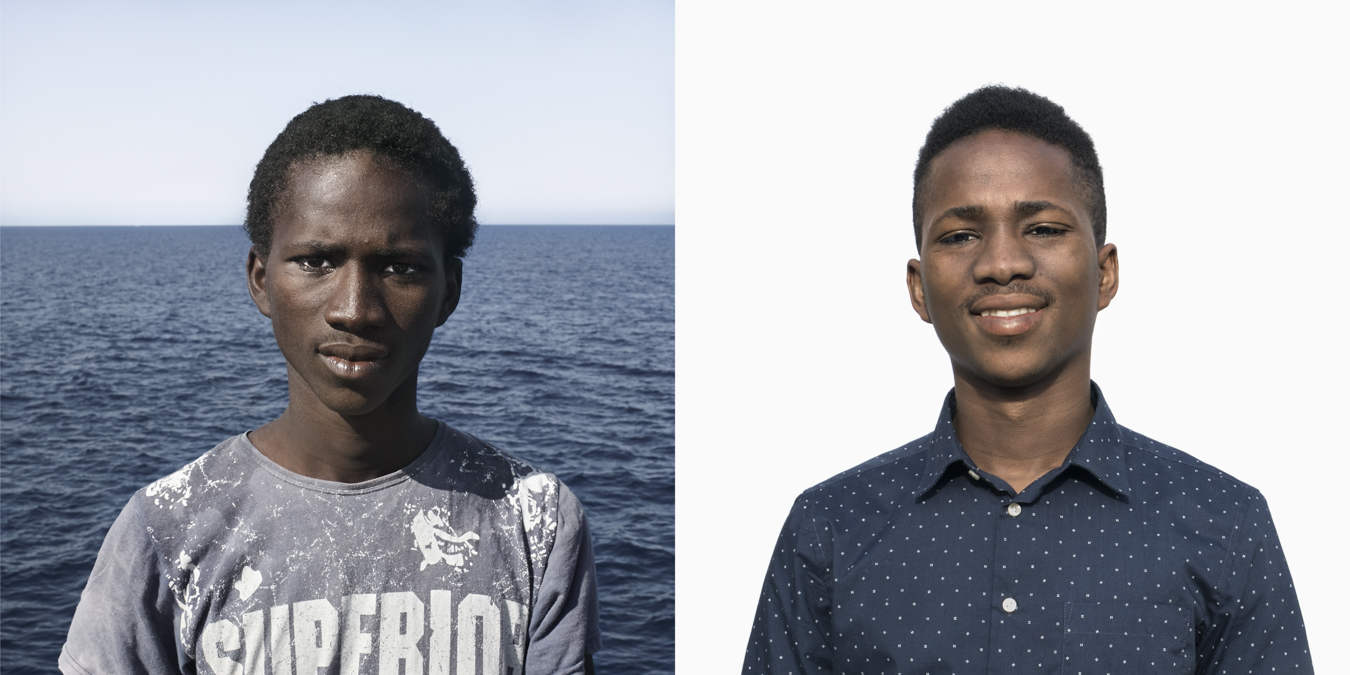
ALPHA, GUINEA – 1999
Alpha. Guinea (1999). Left: 1st August 2016, Mediterranean sea – Libya. Right: 8th February 2019, Ramacca, Italy.
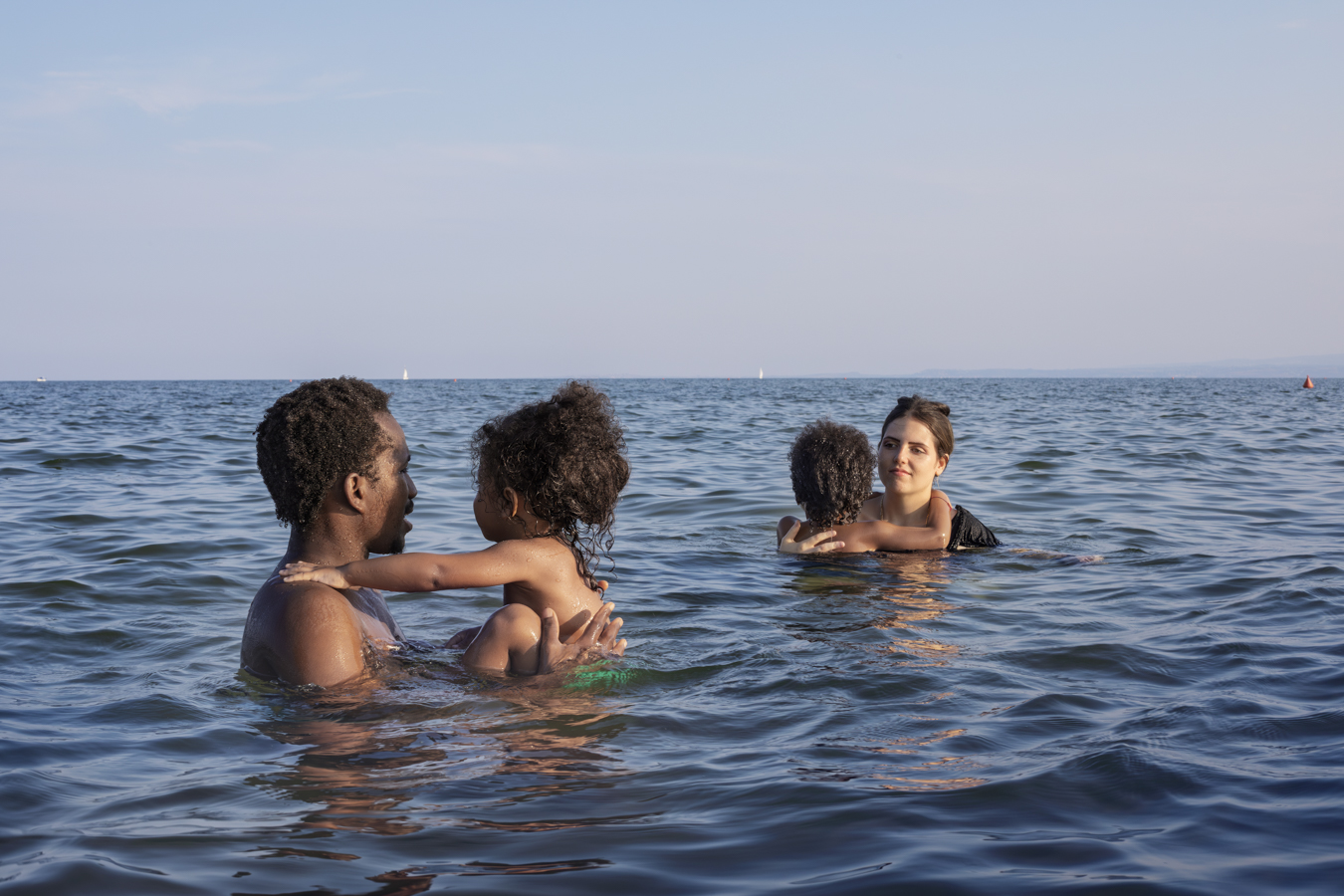
ALPHA, GUINEA – 1999. Sicily, Italy
Alpha (Guinea, 1999), photographed with his wife Sofia and their children, Mattia and Jordan, on a beach in Catania, Sicily, where they spend a few days each summer.
Alpha belongs to the Peul people, a nomadic ethnic group that faces discrimination in parts of Guinea. This, combined with the economic difficulties affecting his family, were the factors that led him to leave the country and migrate to Europe. He met Sofia during a theatre workshop a few months after his arrival in Italy. The workshop was part of a cultural exchange programme between unaccompanied migrant minors residing in the area and local Italian youth. Soon after, they began a relationship that continues to this day.
Alpha and Sofia were married on August 2, 2018—“the same day Alpha arrived in Italy in 2016,” as Sofia recalls. Today they live in Ramacca, a small Sicilian village about 100 kilometres north of the port of Pozzallo, where Alpha disembarked in August 2016. They are now the parents of two children, Mattia and Jordan, and live in the family home, just above the apartment of Sofia’s grandparents, Maria and Salvatore, who are well-known in the village.
Sicily, Italy. August 29, 2024.
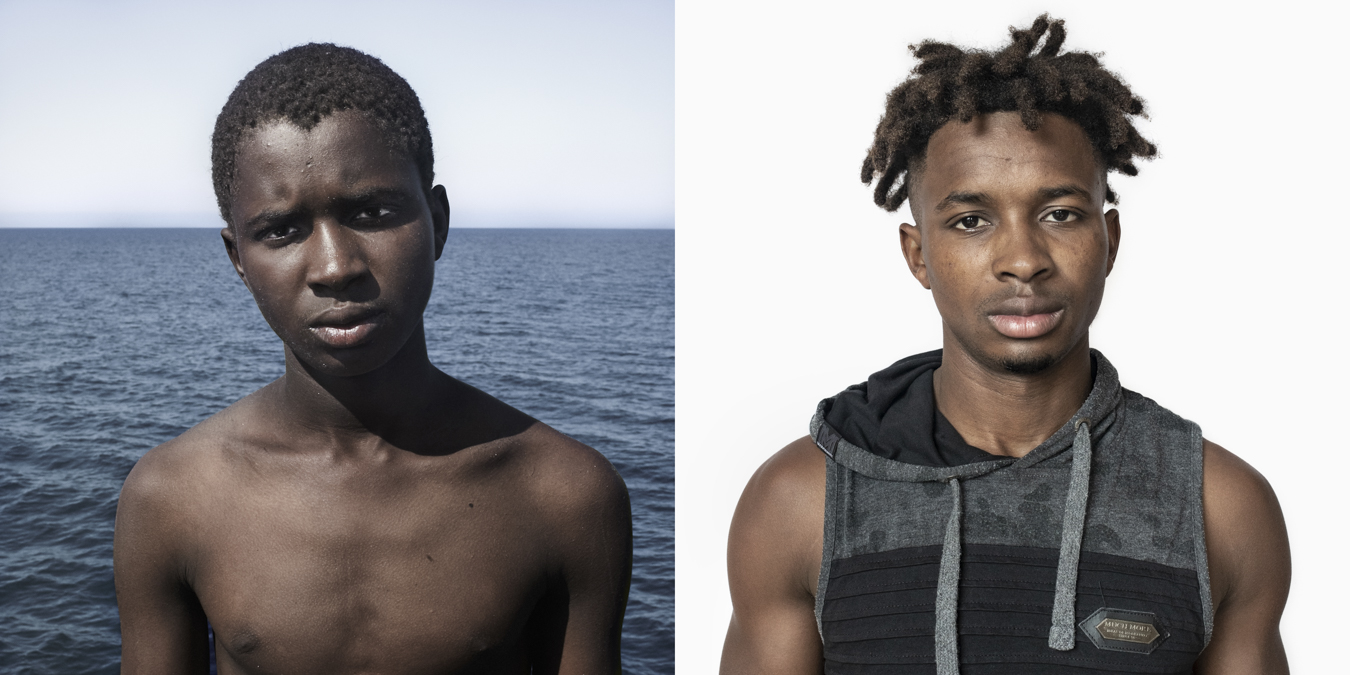
HARUNA, GUINEA – 2001
Haruna. Guinea (2001). Left: 1st August 2016, Mediterranean sea – Libya. Right: 12th September 2021, Nemünster, Germany.
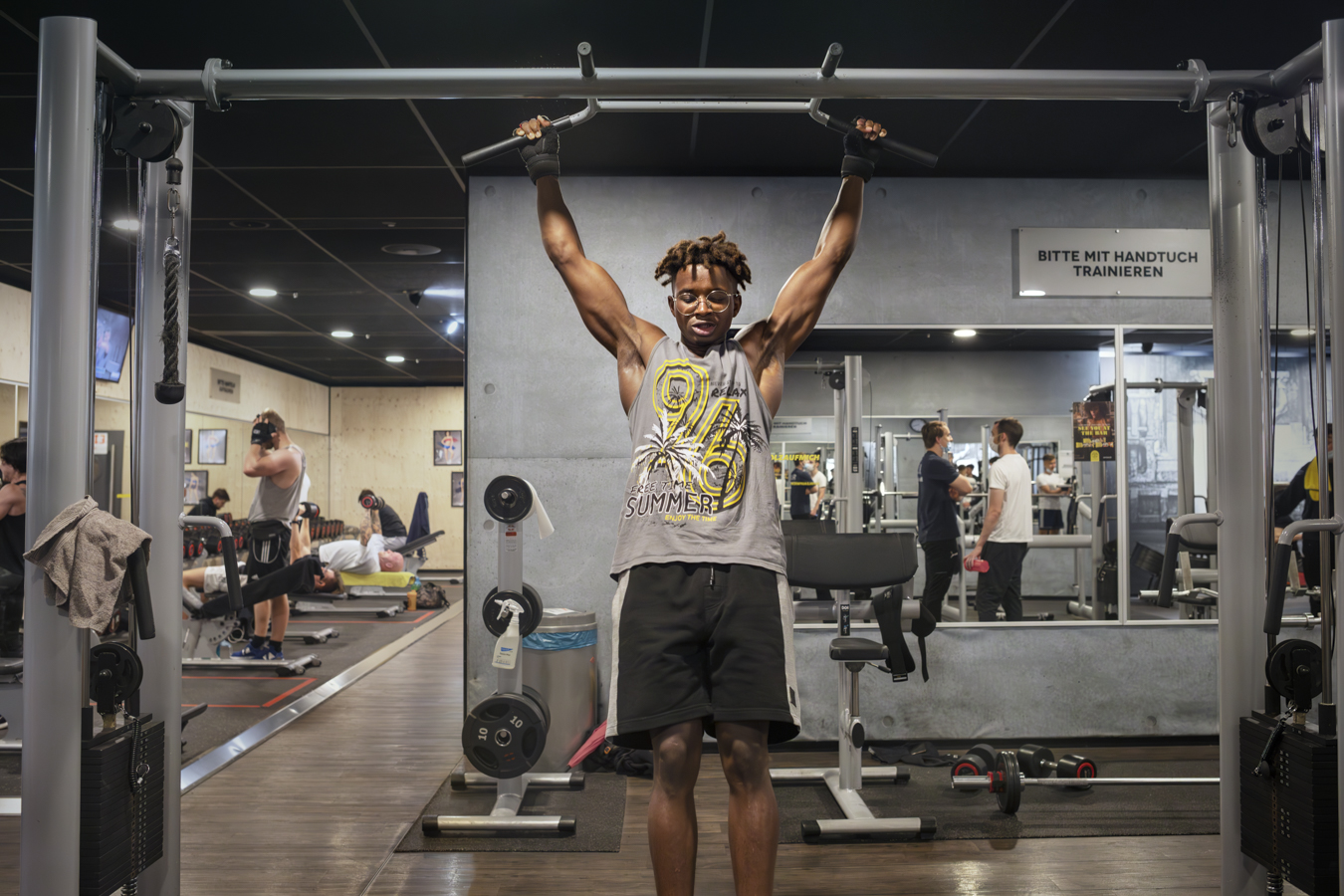
HARUNA, GUINEA – 2001. Neümunster, Germany.
Haruna currently lives in Germany, where he has applied for asylum and is awaiting a response. In the meantime, he works as a personal trainer at a local gym, where he also trains daily—his main passion today.
If anyone has drifted since arriving in Europe, it is Haruna. Like a rudderless boat, he wandered from country to country, often driven by nothing more than chance. He was just a boy when he left Guinea. An older boy from his village told him, “We’re leaving,” and that was it. He left with no money, no plan, and no idea where he was headed.
They managed to survive the migration route and, once in Italy, Haruna continued his journey, spending years between France, Belgium, and the Netherlands before eventually landing in Germany. There, still a minor, he was intercepted by German authorities while heading toward Denmark and was taken to a youth centre in Neumünster, where he currently resides.
Neumünster, Germany. September 13, 2021.